#blockchain verification
Explore tagged Tumblr posts
Text
#blockchain verification#ncog#secure blockchain#blockchain#cryptocurrency#dmail#web3id#Decentralized Database#Post Quantum Secure Blockchain
1 note
·
View note
Text
ProofEasy: Setup verification in your Website
Explore the power of blockchain verification – a secure and transparent method ensuring the integrity of digital transactions. Discover how this decentralized technology authenticates information, fosters trust, and revolutionizes various industries. Dive into the world of tamper-proof records and traceability, where blockchain verification is reshaping the future of secure and reliable data exchange.
#blockchain#blockchain technology#tamper-proof#verification#blockchain verification#technology#services
0 notes
Text
How Are Blockchain and Smart Contracts Revolutionizing Personal Loans?
Introduction
The personal loan industry is undergoing a significant transformation, thanks to emerging technologies like blockchain and smart contracts. These innovations are making loan processing faster, more secure, and transparent. Traditional personal loan processes often involve lengthy paperwork, high-interest rates, and bureaucratic delays. However, with blockchain-powered lending, borrowers can experience streamlined approvals, reduced costs, and improved security.
As digital finance continues to evolve, understanding how blockchain and smart contracts impact the personal loan sector is crucial for both lenders and borrowers. This article explores how these technologies work and their benefits in revolutionizing the lending landscape.
What Is Blockchain and How Does It Apply to Personal Loans?
Blockchain is a decentralized, distributed ledger technology that records transactions securely and transparently. Unlike traditional banking systems, where a central authority controls loan transactions, blockchain ensures that all records are immutable and tamper-proof.
Key Features of Blockchain in Lending:
Decentralization – Eliminates the need for intermediaries like banks and credit agencies.
Transparency – Every transaction is recorded and accessible to relevant parties.
Security – Reduces fraud and unauthorized data access.
Efficiency – Speeds up loan approvals and fund disbursements.
By integrating blockchain, personal loan providers can reduce inefficiencies, making borrowing more accessible and affordable.
What Are Smart Contracts and Their Role in Personal Loans?
Smart contracts are self-executing contracts with terms directly written into code. These contracts automatically execute actions when predefined conditions are met, eliminating the need for intermediaries.
How Smart Contracts Work in Personal Lending:
Borrower Applies for a Loan – Details like loan amount, interest rate, and tenure are recorded on a blockchain.
Smart Contract Verification – The contract checks the borrower's credentials using blockchain data.
Automatic Loan Approval – If all criteria are met, the smart contract executes the loan agreement.
Instant Fund Disbursement – Upon approval, funds are transferred without manual intervention.
Automated Repayment Tracking – Payments are automatically deducted and recorded on the blockchain.
With smart contracts, borrowers benefit from a seamless lending experience, while lenders reduce risks associated with fraud and late repayments.
Benefits of Blockchain and Smart Contracts in Personal Loans
1. Faster Loan Approvals and Disbursements
Traditional personal loan applications can take days or weeks for approval due to manual verification. With blockchain and smart contracts:
Real-time verification speeds up approval processes.
Instant fund transfers ensure quick access to borrowed funds.
Automated underwriting reduces paperwork and delays.
2. Increased Security and Fraud Prevention
One of the biggest challenges in lending is fraud and identity theft. Blockchain technology mitigates these risks by:
Creating tamper-proof transaction records.
Eliminating data manipulation through decentralized verification.
Ensuring borrower identity verification using encrypted blockchain records.
3. Reduced Costs for Borrowers
Banks and traditional lenders charge high processing fees and interest rates due to administrative overheads. Blockchain-based personal loans minimize these costs by:
Removing middlemen like banks and credit agencies.
Lowering transaction fees using decentralized finance (DeFi) platforms.
Providing competitive interest rates through peer-to-peer lending.
4. Transparency and Trust in Lending
Blockchain records all transactions publicly, ensuring transparency in lending agreements. Borrowers and lenders can:
Track loan agreements in real time.
Avoid hidden fees or unfair lending terms.
Ensure compliance with agreed-upon loan conditions.
5. Improved Accessibility to Credit
Many individuals lack a formal credit history, making it difficult to obtain loans from traditional banks. Blockchain lending platforms use alternative credit assessment models, enabling:
Loans for the unbanked and underbanked populations.
Alternative credit scoring using transaction history and blockchain reputation.
Financial inclusion for freelancers, gig workers, and small business owners.
The Rise of Decentralized Finance (DeFi) in Personal Loans
Decentralized Finance (DeFi) is a blockchain-based financial ecosystem that eliminates intermediaries, allowing direct lending and borrowing between individuals.
Features of DeFi Lending:
Smart contract-based lending platforms.
Lower interest rates compared to traditional banks.
Access to global lenders without geographical restrictions.
Popular DeFi lending platforms like Aave, Compound, and MakerDAO are already revolutionizing the way personal loans are issued, making borrowing easier and more cost-effective.
Challenges and Risks of Blockchain-Based Personal Loans
Despite its advantages, blockchain lending faces some challenges:
1. Regulatory Uncertainty
Governments and financial institutions are still working on regulations for blockchain-based personal loans, which could impact widespread adoption.
2. Volatility in Crypto-Backed Loans
Some blockchain loans are backed by cryptocurrencies, which are highly volatile, posing risks for borrowers and lenders.
3. Technical Complexity
Borrowers may need basic knowledge of blockchain and digital wallets, making accessibility a challenge for non-tech-savvy individuals.
4. Limited Consumer Protection
Unlike traditional banks, blockchain-based lending platforms may lack consumer protection mechanisms in case of disputes or fraud.
The Future of Blockchain in the Personal Loan Market
As blockchain and smart contracts gain acceptance, the personal loan industry is expected to undergo further innovations:
1. Mainstream Adoption of Blockchain-Based Lending
More traditional banks may integrate blockchain technology into their lending processes for faster approvals and increased security.
2. Government-Backed Blockchain Lending Platforms
Governments may introduce blockchain-based loan programs to enhance financial inclusion and transparency.
3. AI and Blockchain Integration for Enhanced Credit Scoring
Combining AI with blockchain will enable more accurate borrower assessments, leading to fairer lending practices.
4. Smart Loans with Customizable Terms
Future personal loans may be fully customizable, allowing borrowers to set their preferred repayment structures and interest rates through AI-driven smart contracts.
Conclusion
Blockchain and smart contracts are revolutionizing the personal loan industry by making lending faster, more transparent, and secure. These technologies eliminate the need for intermediaries, reducing costs and improving accessibility for borrowers worldwide. While challenges like regulatory uncertainty and crypto volatility remain, the future of blockchain lending looks promising.
As financial institutions and fintech companies continue to innovate, borrowers can expect a seamless and efficient personal loan experience in the years to come. Understanding how blockchain-based lending works today will help individuals make informed borrowing decisions and take advantage of future advancements in digital finance.
#personal loan#loan apps#fincrif#bank#nbfc personal loan#personal loan online#personal loans#loan services#finance#personal laon#Personal loan#Blockchain in lending#Smart contracts for personal loans#Decentralized finance (DeFi) loans#Blockchain-based personal loans#Crypto-backed personal loans#Smart contract lending#Peer-to-peer lending with blockchain#Digital lending platforms#Fintech and blockchain loans#Secure loan transactions with blockchain#Instant loan approvals with smart contracts#Automated loan disbursement#Personal loan fraud prevention#AI and blockchain in lending#Digital identity verification for loans#Smart loan agreements#Alternative credit scoring with blockchain#Secure lending platforms#Financial inclusion through blockchain
1 note
·
View note
Text
Tabula Rasa Inversa: Structural Sovereignty through Metaphysical Code
A Theoretical Physics-Based Framework for Code-Embedded Sovereignty and Ethical Cybernetics Abstract This paper introduces a formal theoretical model…Tabula Rasa Inversa: Structural Sovereignty through Metaphysical Code
#academic code protection#AI authorship frameworks#AI authorship integrity#AI sovereignty#AI transparency#authorial gradient mapping#authorial presence in code#authorial signal persistence#authorship as code signature.#authorship detection#authorship in distributed systems#authorship resonance#authorship verification#authorship-based system design#automata design#automorphic feedback#automorphic signal validation#blockchain sovereignty#code validation#code-based authorship#code-bound identity#cognitive code systems#computational authorship analysis#computational metaphysics#contribution divergence#cryptographic authorship#cryptographic identity proof#cyber sovereignty#cybersecurity engineering#cybersecurity philosophy
0 notes
Text
🗳️ Digital Voting 2025: How India is Reinventing Democracy Through Technology
India, the world’s largest democracy, is undergoing a silent revolution—one that’s transforming the very foundation of voting. In 2025, the spotlight is on digital voting 🖥️🗳️, a cutting-edge evolution aimed at increasing accessibility, transparency, and trust in the electoral process. As the nation embraces this high-tech shift, the future of Indian democracy looks smarter, faster, and more…
#AI in elections#biometric verification elections#blockchain voting system#digital voting India 2025#e-voting technology#Election Commission digital reforms#future of Indian democracy#India democracy innovation#Indian election technology#NRI voting India#politics 2025 India#remote voting in India#secure voting online#voting app India#voting system India 2025
0 notes
Text
Defective Chinese Imports in India? Urgent Legal Remedies to Sue Suppliers, Recover Payments & Resolve Contract Disputes (2025 Guide)-4| Online Dispute Resolution Platforms for Cross-Border Claims | Documentation and Evidence Preservation Strategies | Due-Diligence Protocol | Enforcement of Judgments | Post-Judgment Enforcement

Online Dispute Resolution Platforms for Cross-Border Claims Some specialised ODR platforms are now focusing on claims relating to India-China trading disputes, thus saving costs and time. Therefore, in the Tata Motors case, the settlements from accredited ODR platforms were made binding under Indian law. ODR Selection Criteria: ● Track record of the platform’s enforcement in both countries’ jurisdictions ● Technical expertise of available mediators ● Translation and linguistic assistance ● Handling protocols of documentary evidence
Documentation and Evidence Preservation Strategies: Required Legal Documents Applicable to Imports from China Evidence Collection for Used Parts and Substandard Materials Beyond standard records like emails and contracts, cases involving used or inferior components call for more technical forms of proof:
Documentation Regarding the Dating of the Component: Prepare expert reports on date codes and wear marks, along with instructions on how to distinguish new from used components.
Material Composition Tests: Performing XRF tests for metals, to identify polymers for plastics, and chemical examination for textiles, to be performed in accredited laboratories meeting ISO 17025 compliance standards.
Statistical Sampling Protocol: For shipments comprising a large number of identical components, conduct sampling by ISO 2859 for statistical relevance and validity in a court of law.
Software Version Authentication: Credible Findings That Will Stand Legal Scrutiny. Case Study Success: In a 2024 case, we secured a favourable judgment after metallurgical evidence was presented demonstrating that the bearings in the so-called “new” machinery had already undergone stress cycles that would not have been consistent with factory-standard testing. Supply Chain Protection Framework: A must read for Indian Businesses and Companies before they import from Chinese Manufacturers And Suppliers.
0 notes
Text
Sam Altman’s Eye-Scanning Startup Expands to the UK: A New Era in Digital Identity
In the rapidly evolving digital world, new ways to prove who we are online are essential to maintain security and trust. One of the most exciting recent innovations is the introduction of an eye-scanning technology that offers a secure and user-friendly way to verify identities. This cutting-edge system uses iris scanning to create a unique digital identity, providing a reliable method to ensure that each user is a real person. This technology, developed by a startup founded by a prominent tech entrepreneur, aims to solve growing problems related to fake online accounts and AI-generated bots, which have been creating challenges across social media platforms, financial services, and more. By using this biometric data in a privacy-focused way, the system offers a groundbreaking approach that balances security with respect for user data.
Timeline of the Project: From Concept to UK Launch and Beyond
The journey of this eye-scanning identity verification project began several years ago, driven by a vision to build a global digital identity network. After initial testing and deployments in select locations, the company officially expanded to the United Kingdom starting this year. The launch includes multiple major cities such as London, Manchester, Birmingham, Cardiff, Belfast, and Glasgow. These locations are equipped with user-friendly devices called “Orbs” where individuals can verify their identity by scanning their irises in a matter of seconds. The rollout plans include setting up these devices not only in public spaces but also in collaboration with retailers for easy self-service access. The expansion is part of a much larger plan to bring this technology to over 35 cities worldwide, making it accessible to millions and aiming for widespread adoption in the near future.

The Visionary Behind the Innovation: A Leader in Technology
This exciting technology is the brainchild of Sam Altman, a well-known figure in the technology world recognized for his leadership in artificial intelligence development and entrepreneurial ventures. Altman’s vision with this startup is to create a trustworthy and accessible way to establish digital identity that respects privacy and promotes fairness. His previous work in AI and tech innovation gives him a unique perspective on the risks associated with fake online entities, and his goal is to tackle these challenges head-on. By leveraging biometric verification, the startup aims to build a system that cannot be easily spoofed or replicated by bots or malicious actors, making the digital world safer and more reliable.
The Significance of the New Digital Identity Era
Why does this new digital identity verification system matter so much today? In an era where online interactions have become a major part of life, trust and authenticity are more important than ever. Fake profiles, automated bots, and AI-generated content can lead to misinformation, fraud, and compromised security. This eye-scanning technology offers a radically new way to guarantee that the person behind the screen is human. This is crucial for social media platforms, financial institutions, and any service requiring secure identity confirmation. Additionally, the technology incentivizes users by providing a small amount of cryptocurrency upon verification, encouraging wider participation and creating a new economic model that rewards privacy and authenticity.
Boosting Business Efficiency and Security Through Biometric Identity
For businesses, this technology is a game-changer. Traditional identity verification processes often involve manual checks, documents, and can be time-consuming and prone to fraud. The eye-scanning system streamlines the process, offering quick and reliable verification that can be integrated into apps, websites, and physical points of service. This reduces operational costs, minimizes fraud risk, and enhances customer experience. Moreover, businesses can confidently onboard users knowing that their identities are verified biometrically, which builds trust and can improve compliance with regulatory requirements. The technology also opens doors to new business models involving secure digital transactions and decentralized identity systems.
Fresh Features Enhancing User Experience and Security
What makes this technology stand out are several fresh features that complement the core identity verification function. The device itself, called the “Orb,” is designed to be privacy-first, ensuring that biometric data is not stored centrally but remains on the user’s device in an encrypted form. This design helps alleviate concerns about data breaches or misuse. Another exciting feature is the incentive system, where users receive cryptocurrency rewards, encouraging adoption and participation. The system also includes plans for self-service verification kiosks, making it convenient for users to verify their identity without needing assistance. Continuous updates aim to improve accuracy, reduce scanning time, and integrate with various digital platforms, making it a versatile and evolving solution.
Read More : Sam Altman’s Eye-Scanning Startup Expands to the UK: A New Era in Digital Identity
#Sam Altman#Worldcoin#eye-scanning#digital identity#UK expansion#biometrics#blockchain#Web3#identity verification#privacy#AI startup#decentralized identity#Sam Altman UK#World ID#crypto authentication
0 notes
Text
“PWAN Max’s Strategic Shift: Embracing Prop-Tech and Digital Innovation for Future Growth”
PWAN/PWAN Max is redefining its business strategy with advanced Prop-Tech solutions, digital transformation, and client-centered innovation to lead Nigeria’s property sector into the future. The Rise of Prop-Tech and the Real Estate Evolution The global real estate industry is undergoing a monumental shift. At the center of this transformation lies Prop-Tech—a convergence of property and…
#AI in real estate Nigeria#blockchain title verification Nigeria#client portal for land buyers#digital real estate Nigeria#online land payment Nigeria#PropTech leaders in Africa#PWAN Max PropTech#PWAN virtual site tour#real estate CRM Nigeria#smart property documentation
0 notes
Text
“PWAN Max’s Strategic Shift: Embracing Prop-Tech and Digital Innovation for Future Growth”
PWAN/PWAN Max is redefining its business strategy with advanced Prop-Tech solutions, digital transformation, and client-centered innovation to lead Nigeria’s property sector into the future. The Rise of Prop-Tech and the Real Estate Evolution The global real estate industry is undergoing a monumental shift. At the center of this transformation lies Prop-Tech—a convergence of property and…
#AI in real estate Nigeria#blockchain title verification Nigeria#client portal for land buyers#digital real estate Nigeria#online land payment Nigeria#PropTech leaders in Africa#PWAN Max PropTech#PWAN virtual site tour#real estate CRM Nigeria#smart property documentation
0 notes
Text
Smart Ticketing Technology
CounterTEN revolutionizes sports events with innovative solutions designed for modern fans. Our advanced systems streamline entry, enhance security, and improve overall event management. With Smart Ticketing Technology, we ensure faster check-ins, reduced fraud, and seamless experiences for attendees and organizers alike. Whether managing local games or large-scale tournaments, CounterTEN delivers reliability and efficiency every step of the way. Experience the future of event access with our cutting-edge platform tailored specifically for the sports industry. Let us simplify your ticketing process while maximizing fan engagement.
0 notes
Text
Identity Verification for Digital Purchases San Francisco
https://dyneum.io/
Dyneum offer decentralized identity systems that allow users to maintain full control over their personal data, providing more secure and private online experiences.Dyneum may be involved in issuing and managing verifiable credentials (VCs) through a blockchain-based approach, ensuring that credentials like education records, professional certifications, and other identity-related data are secure, easily accessible, and tamper-proof.
Decentralized Identity (DID) is an emerging paradigm in the world of digital identity management, particularly for blockchain and crypto-based technologies. It represents a shift from traditional identity management, where individuals rely on centralized entities (governments, banks, etc.) to authenticate their identity.
#Blockchain-Based E-Commerce Platforms New York#Decentralized Identity for E-Commerce Austin#Identity Verification for Digital Purchases San Francisco#DID Authentication Platform San Francisco
0 notes
Text
Why Document Verification Matters? ProofEasy To Share Insights & Solutions For It At GITEX

Today, our world is driven by digital transformation, shaping every aspect of our lives. But in this digital era, the need for reliable document verification has never been more critical.
Whether in education or healthcare, the authenticity of documents can mean the difference between success and failure. Document verification is just another element to ensure document security.
That's why, at the GITEX Global 2023 event, ProofEasy is set to take center stage, offering valuable insights and innovative solutions for tackling the challenges of document verification.
The Significance of Document Verification
Document verification plays a pivotal role in ensuring the integrity of various sectors. Here we focus on two prime industries of our society - education and healthcare, where verification of documents is far more superior than one could imagine.
Education
Credential Verification
Document verification ensures the authenticity of educational credentials such as degrees, diplomas, and transcripts.
It prevents admission of students based on fraudulent documents, maintaining the integrity of educational institutions.
Preventing Academic Fraud
Counterfeit degrees and diplomas have become a growing concern, making document verification essential.
It helps in curbing academic fraud and maintaining the reputation of educational institutions.
Enabling Fair Opportunities
Document verification ensures that students and job seekers receive the opportunities they deserve based on their actual qualifications.
It levels the playing field by eliminating the advantage of those who use fake documents.
Data Security
Educational institutions handle vast amounts of sensitive student data.
Document verification helps protect this data from unauthorized access and potential breaches.
Healthcare
Patient Record Accuracy
In healthcare, document verification ensures the accuracy of patient records and medical history.
It reduces the risk of misdiagnosis and incorrect treatment plans.
Patient Identification
Correctly identifying patients is crucial to avoid medication errors and ensure the right treatment is administered.
Document verification aids in accurate patient identification.
Data Privacy and Security
Healthcare providers deal with sensitive patient data, making data security paramount.
Document verification controls access to patient records, enhancing data privacy.
Compliance and Regulations
Healthcare is subject to strict regulations and compliance requirements.
Document verification helps organizations adhere to these regulations, reducing legal risks.
Preventing Medical Identity Theft
Document verification is essential to prevent medical identity theft, where someone uses another person's information for fraudulent medical care.
It safeguards patients from financial and medical consequences.
These points highlight the critical role that document verification plays in both education and healthcare, ensuring trust, accuracy, and security in these vital sectors.
ProofEasy's Document Verification Solutions
ProofEasy understands the critical role that document verification plays in these sectors and is committed to providing innovative solutions to address these challenges.
At GITEX Global 2023, ProofEasy will showcase its advanced document verification offerings. Their solutions leverage patented blockchain verification with unique QR code integration.
With ProofEasy, you can trust that documents are genuine and have not been tampered with.
Expert Insights and Tailored Solutions at GITEX Global 2023
GITEX Global 2023 promises to be a groundbreaking event, and ProofEasy is set to be at the forefront of discussions on document security and verification. Their team of experts will share invaluable insights into the evolving landscape of document verification, including emerging threats and trends.
Moreover, ProofEasy will showcase tailored solutions designed to address the unique challenges faced by educational institutions and healthcare providers.
So, what are you waiting for? Be sure to stop by Stand H3-A06, Hall 3 where ProofEasy will be stationed from October 15th to 18th, 2023 in Dubai Harbour.
#Document Security#exhibition#Verify Documents#Blockchain Verification#Expand North Star#Education#Healthcare
0 notes
Text
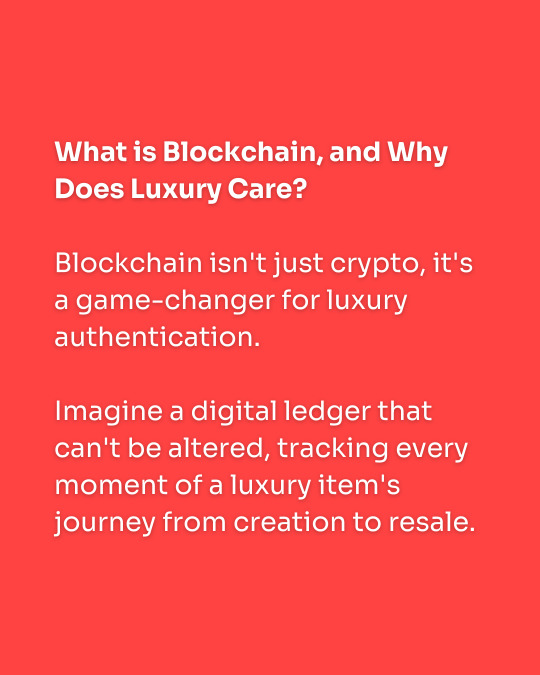

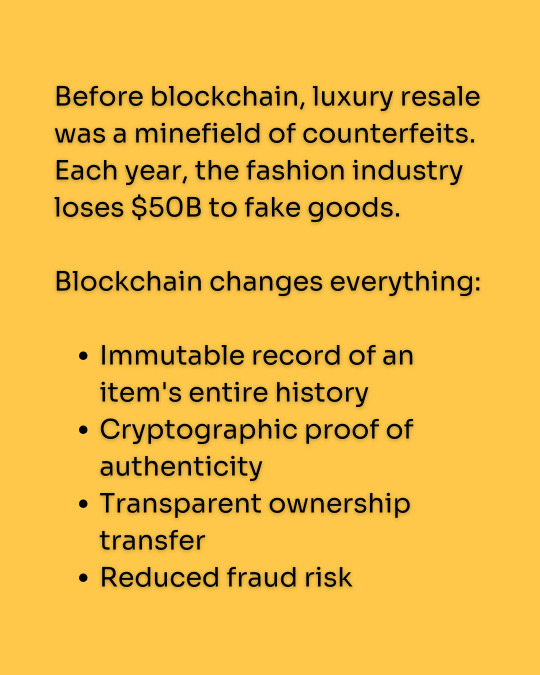
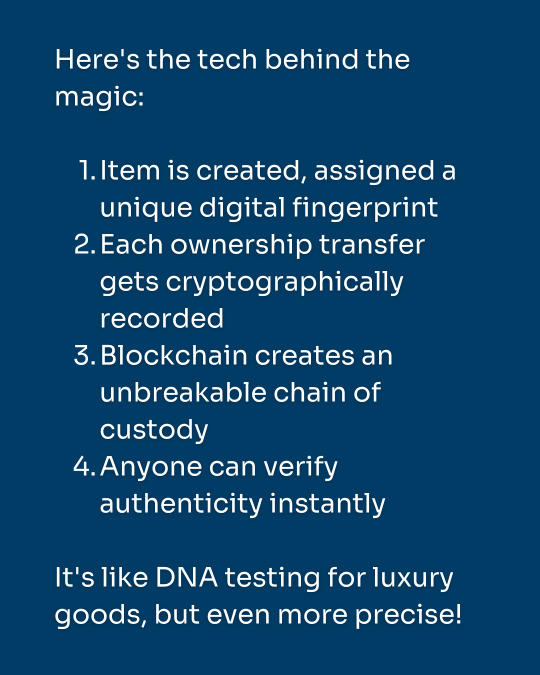
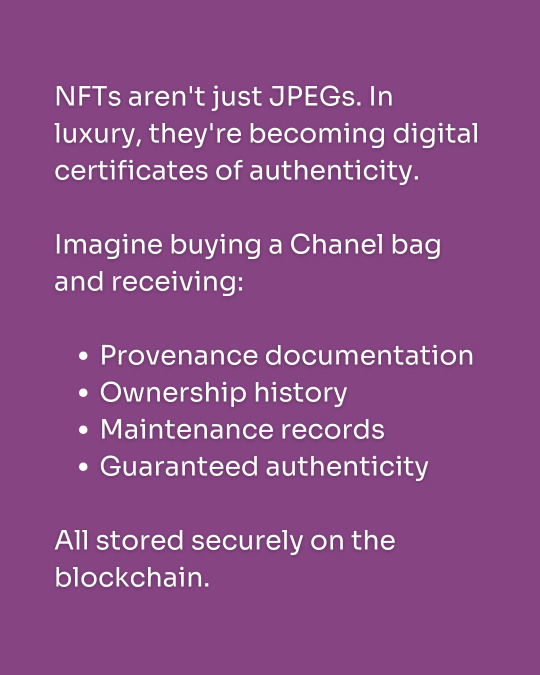
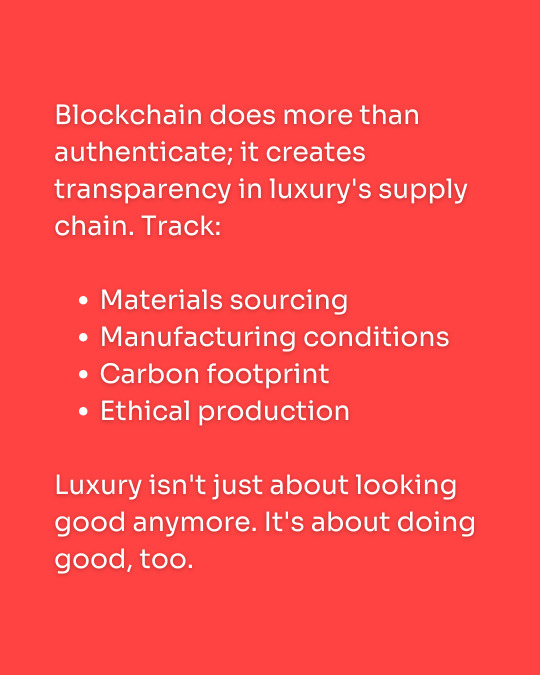
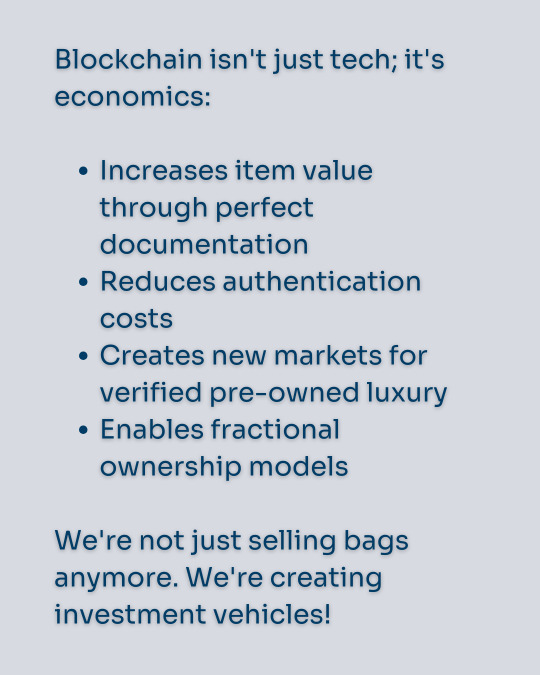
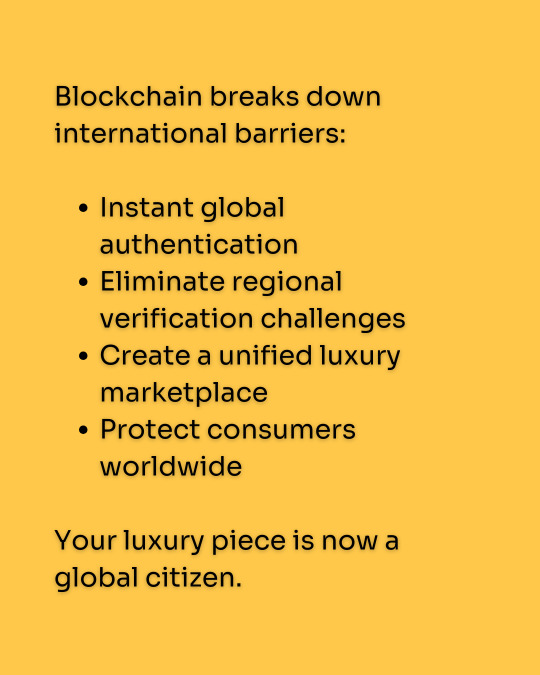
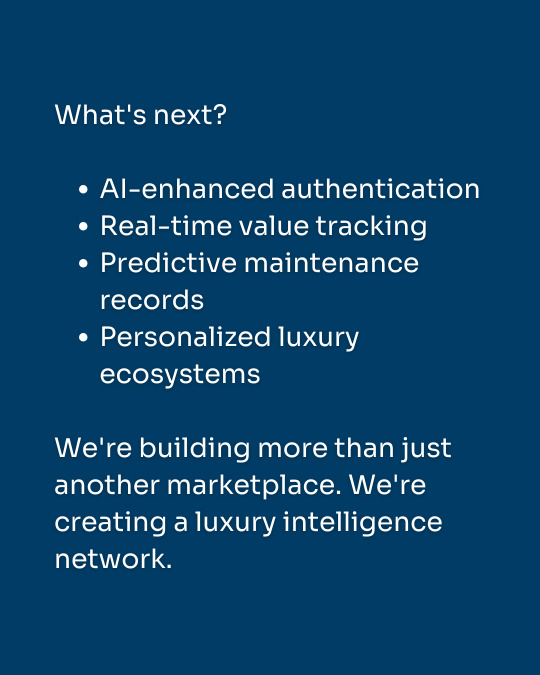

Blockchain technology is revolutionizing the luxury market beyond just cryptocurrency. From cryptographic proofs to transparent ownership records, this innovative digital ledger is transforming how we authenticate designer goods. No more wondering if that handbag is real, just pure, verifiable luxury at your fingertips.
The fashion industry loses $50B annually to counterfeits, but blockchain’s immutable records create an unbreakable chain of custody for your favorite pieces. It’s like DNA testing for luxury goods, but even more precise!
#blockchain#luxury authentication#designer verification#anticounterfeit#fashion tech#authentication service#authentic luxury#luxury resale#luxury fashion#designer resale
0 notes
Text
Tabula Rasa Inversa: Structural Sovereignty through Metaphysical Code
A Theoretical Physics-Based Framework for Code-Embedded Sovereignty and Ethical Cybernetics Abstract This paper introduces a formal theoretical model rooted in physics, cybernetics, and sovereignty ethics to describe how stolen or co-opted intellectual portfolios inherently encode structural feedback loops that bind dependent systems to the original author. Using principles of graph theory,…
#academic code protection#AI authorship frameworks#AI authorship integrity#AI sovereignty#AI transparency#authorial gradient mapping#authorial presence in code#authorial signal persistence#authorship as code signature.#authorship detection#authorship in distributed systems#authorship resonance#authorship verification#authorship-based system design#automata design#automorphic feedback#automorphic signal validation#blockchain sovereignty#code validation#code-based authorship#code-bound identity#cognitive code systems#computational authorship analysis#computational metaphysics#contribution divergence#cryptographic authorship#cryptographic identity proof#cyber sovereignty#cybersecurity engineering#cybersecurity philosophy
0 notes
Text
Building a Trust-First Digital Ecosystem: Why Verifiable Credentials are the Future of Identity
In today's increasingly digital world, trust is the cornerstone of every interaction—whether you're applying for a job, accessing government services, or verifying a user's credentials on a digital platform. Yet, our current systems of identity verification are often fragmented, outdated, and prone to fraud. Enter Verifiable Credentials—a transformative approach to identity that puts individuals in control while building a trust-first digital ecosystem.
What Are Verifiable Credentials?
Verifiable credentials (VCs) are digitally signed pieces of information that confirm facts about a person or organization—like a diploma, license, or ID card—issued by a trusted authority and cryptographically secured to prevent tampering. These credentials can be independently verified without relying on the issuer every time.
Unlike traditional credentials, which often require manual checks or third-party verification, verifiable digital credentials enable seamless and secure exchanges of trust across digital platforms.
Why the Traditional System Is Failing Us
The current systems of credentialing rely heavily on central databases and intermediaries for validation. These systems suffer from several issues:
Time-consuming manual verification
Risk of forged or altered documents
Lack of interoperability between institutions
Users have little to no control over their own data
With data breaches and digital fraud on the rise, it’s clear that a more resilient, user-centric solution is needed.
The Case for a Trust-First Ecosystem
A trust-first digital ecosystem begins with enabling data that is:
Tamper-proof: Protected against unauthorized modification
Portable: Owned and shared by the individual
Interoperable: Can be used across multiple platforms
Privacy-preserving: Only the necessary data is shared
By leveraging digital credential verification, systems can instantly confirm the authenticity of a credential without calling back to the issuer. This builds a layer of trust that is both scalable and secure.
Real-World Applications of Verifiable Credentials
Verifiable credentials are already making waves across industries:
Education: Universities issue digital degrees that can be verified by employers instantly
Healthcare: Medical professionals carry credentials that are authenticated before accessing systems
Government: Digital IDs issued to citizens for use in public services
Workforce: Candidates share verifiable work histories and licenses with potential employers
In all these scenarios, verifiable digital credentials eliminate friction, improve efficiency, and protect against fraud.
Why Verifiable Credentials Are the Future
Here’s why verifiable credentials are here to stay:
User empowerment: Individuals control who sees what, and when
Instant verification: Reduces onboarding time and administrative costs
Fraud prevention: Cryptographic signatures guarantee authenticity
Global interoperability: Standards-based frameworks enable cross-border use
As more organizations and governments adopt these frameworks, we’ll see a shift from siloed identity systems to a unified, trust-first digital infrastructure.
How Dhiway Is Leading the Way
At Dhiway, we’re building the backbone of this trust-first digital world through robust trust registries and infrastructure that supports verifiable digital credentials. Our solutions ensure data integrity, streamline credential issuance, and power secure verification—putting trust and transparency at the center of every digital interaction.
Conclusion
The future of identity is decentralized, user-controlled, and built on trust. By embracing verifiable credentials and advanced digital credential verification, we’re not just improving security—we’re redefining how people and organizations build trust in the digital age.
0 notes